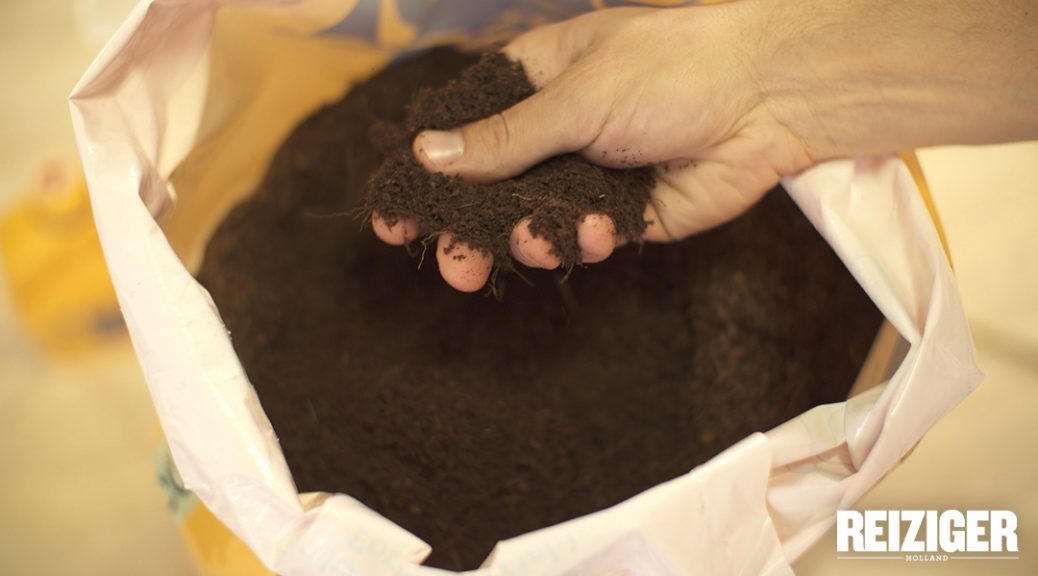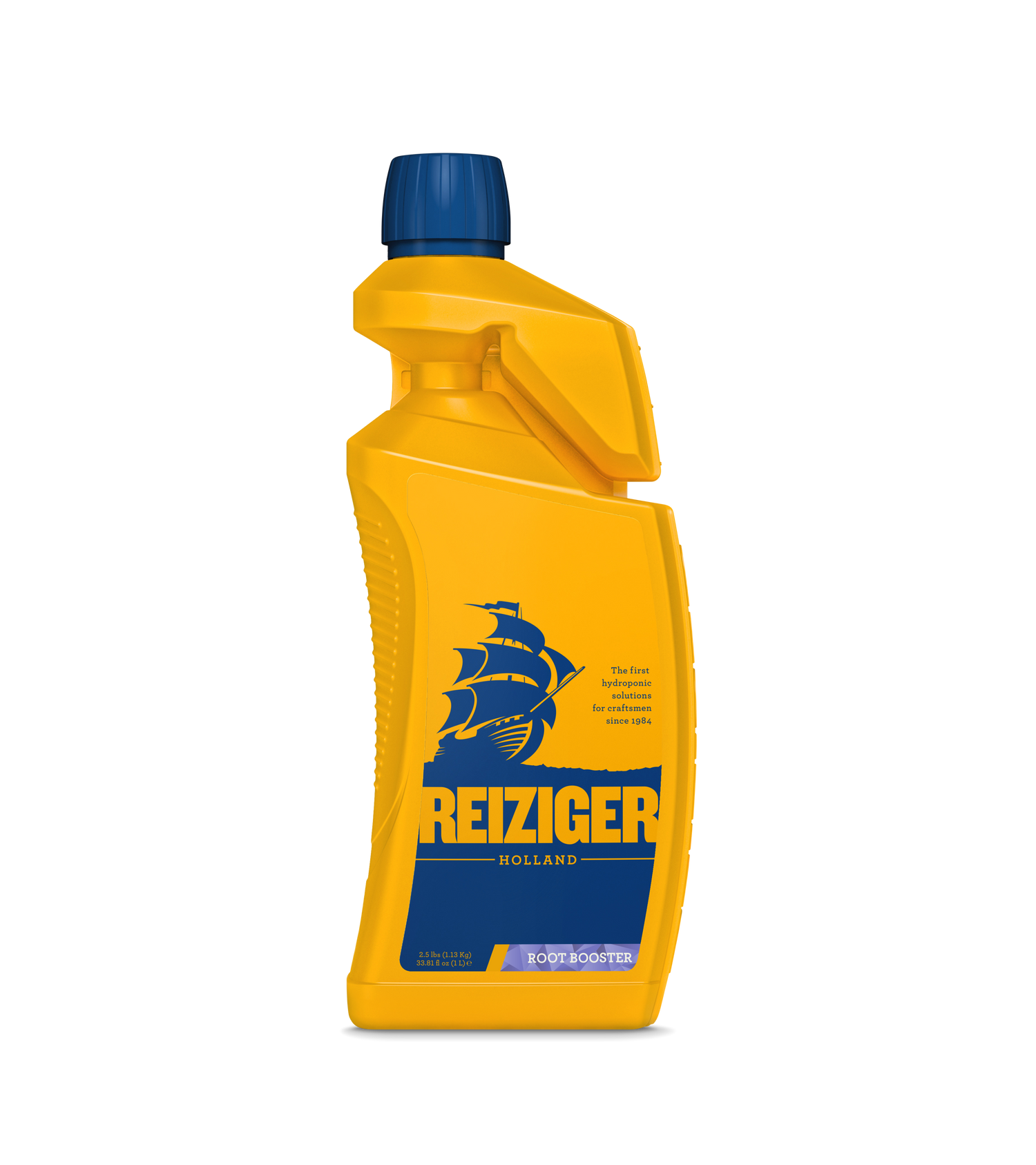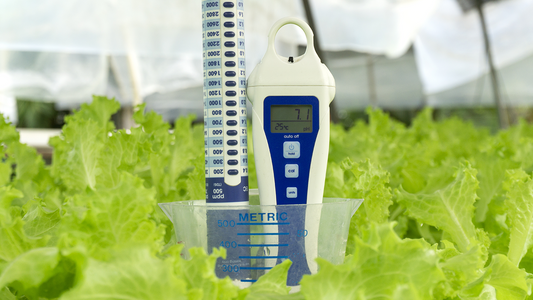
What is a Growing Medium?
Share
Hydroponic gardening is gardening without soil, and that means to grow your crops you need a good replacement medium. But what exactly is a growing medium?
A growing medium, also known as a substrate or potting mix, is a material other than soil that is used to grow plants in. Plants require a medium that can hold their roots in order to grow, but can grow in anything really, as long as there is water, sufficient nutrients and oxygen available.
In soilless culture or hydroponics, soil is replicated by the use of a growing medium. Since the introduction of soilless culture, many types of growing media have been tried. Some have proven to be successful, others have not. Let’s take a closer look at some of the different types.
Peat moss
Peat is made from an accumulation of partially decayed plant remains or organic matter. There are several different qualities available on the market from partially decomposed to highly decomposed with large variations in particle size. Our peat mix has been formulated as a superior base for fruiting and flowering plants grown in containers, pots or beds.
Stone wool
Stone wool is made from melted basalt and limestone that is spun and solidified as fibres. It can be supplied in the form of slabs, plant blocks, plugs, or granules. In general, after complete saturation, stone wool slabs are very wet. Most of the water can be extracted with low moisture tensions, but when a stone wool slab is dried out completely it is difficult to rewet it. Stone wool granules are mostly applied as components of potting soil mixtures.
Sand
Sand is very heavy as a medium and has a very limited water buffer and often low air content; this is because sand contains few big pores. Therefore, as growing medium, coarse sand is preferred. Would would suggest against growing oxygen-sensitive crops with this medium.
Lava
When lava solidifies into solid rock it can be dug up, broken and sieved for use as a growing medium. Because of its small water buffer, water irrigation must be frequent. Lava is suitable for use in thin substrate layers. It’s a heavy product with a moderate amount of pores, and due to its granular form it is airy, but retains little water.
Pumice
Pumice is another volcanic product. This material has a porous structure, and of all the volcanic rocks, pumice has the lowest bulk density. Some sources contain clay particles so that the air content is low and blockages may occur for proper drainage. It’s a very durable medium and can be applied for several years.
Perlite
This glass-like volcanic rock can be found in all various places worldwide. For use, it is ground, sieved and then roasted at 10,000˚C. Perlite is used often in potting soil mixtures and increasingly as a growing medium. It’s very porous, light, and can hold lots of water and air. It has no buffering capacity for nutrients.
Polyurethane
Polyurethane is produced from mineral oil products and is often used in the furniture industry and in mattresses. The cutting remnants are made applicable for substrate growing after they are ground to granules. Polyurethane contains much air and little water, so water supply should be frequent. It’s flexible, has a low EC and no pH buffer, and lasts at least 10 years.
Phenol resin
Phenol resin foam is made by foaming up mineral oil products. A well known form is flower sticking foam. This product can be produced as a slab, or as granules, which are often used in orchid and anthurium crops. The foam retains water but in its granular form it contains more air because of the cavities between the granules.
Coir
Coir is a waste product derived from coconuts and consists of coir dust, coir chips and coir fibre. Its bark contains fibres and dust. Coir fibres contain oxygen with a low water holding capacity; coir dust absorbs water but retains adequate oxygen. The products are not inert, which means they react to fertilisers and have a high buffering capacity for nutrient elements. Our coco coir pith will help plants absorb 50% more nutrients than ordinary coco peat to grow plants twice the size and protect against over and under fertilising.
Expanded clay
This medium is created by baking specific types of dry clay until they expand. In the process, various granule sizes are produced, as well as broken clay granules. Expanded clay granules have a low weight and a porous structure, containing a large amount of air and little water, they are strong and can be washed and reused. Our expanded clay products provide optimal aeration and drainage, as well as vigorous root growth.
For more help or information about our products, contact us on 1800 Reiziger.
A growing medium, also known as a substrate or potting mix, is a material other than soil that is used to grow plants in. Plants require a medium that can hold their roots in order to grow, but can grow in anything really, as long as there is water, sufficient nutrients and oxygen available.
In soilless culture or hydroponics, soil is replicated by the use of a growing medium. Since the introduction of soilless culture, many types of growing media have been tried. Some have proven to be successful, others have not. Let’s take a closer look at some of the different types.
Peat moss
Peat is made from an accumulation of partially decayed plant remains or organic matter. There are several different qualities available on the market from partially decomposed to highly decomposed with large variations in particle size. Our peat mix has been formulated as a superior base for fruiting and flowering plants grown in containers, pots or beds.
Stone wool
Stone wool is made from melted basalt and limestone that is spun and solidified as fibres. It can be supplied in the form of slabs, plant blocks, plugs, or granules. In general, after complete saturation, stone wool slabs are very wet. Most of the water can be extracted with low moisture tensions, but when a stone wool slab is dried out completely it is difficult to rewet it. Stone wool granules are mostly applied as components of potting soil mixtures.
Sand
Sand is very heavy as a medium and has a very limited water buffer and often low air content; this is because sand contains few big pores. Therefore, as growing medium, coarse sand is preferred. Would would suggest against growing oxygen-sensitive crops with this medium.
Lava
When lava solidifies into solid rock it can be dug up, broken and sieved for use as a growing medium. Because of its small water buffer, water irrigation must be frequent. Lava is suitable for use in thin substrate layers. It’s a heavy product with a moderate amount of pores, and due to its granular form it is airy, but retains little water.
Pumice
Pumice is another volcanic product. This material has a porous structure, and of all the volcanic rocks, pumice has the lowest bulk density. Some sources contain clay particles so that the air content is low and blockages may occur for proper drainage. It’s a very durable medium and can be applied for several years.
Perlite
This glass-like volcanic rock can be found in all various places worldwide. For use, it is ground, sieved and then roasted at 10,000˚C. Perlite is used often in potting soil mixtures and increasingly as a growing medium. It’s very porous, light, and can hold lots of water and air. It has no buffering capacity for nutrients.
Polyurethane
Polyurethane is produced from mineral oil products and is often used in the furniture industry and in mattresses. The cutting remnants are made applicable for substrate growing after they are ground to granules. Polyurethane contains much air and little water, so water supply should be frequent. It’s flexible, has a low EC and no pH buffer, and lasts at least 10 years.
Phenol resin
Phenol resin foam is made by foaming up mineral oil products. A well known form is flower sticking foam. This product can be produced as a slab, or as granules, which are often used in orchid and anthurium crops. The foam retains water but in its granular form it contains more air because of the cavities between the granules.
Coir
Coir is a waste product derived from coconuts and consists of coir dust, coir chips and coir fibre. Its bark contains fibres and dust. Coir fibres contain oxygen with a low water holding capacity; coir dust absorbs water but retains adequate oxygen. The products are not inert, which means they react to fertilisers and have a high buffering capacity for nutrient elements. Our coco coir pith will help plants absorb 50% more nutrients than ordinary coco peat to grow plants twice the size and protect against over and under fertilising.
Expanded clay
This medium is created by baking specific types of dry clay until they expand. In the process, various granule sizes are produced, as well as broken clay granules. Expanded clay granules have a low weight and a porous structure, containing a large amount of air and little water, they are strong and can be washed and reused. Our expanded clay products provide optimal aeration and drainage, as well as vigorous root growth.
For more help or information about our products, contact us on 1800 Reiziger.




